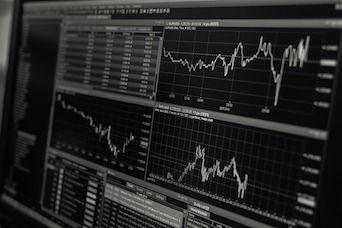How to Spot a Bubble
Investing can be tricky. When assets are traded at a price that strongly exceeds their real value, look for an economic bubble to burst. Here’s what to watch for.

Dan Ferris, a brilliant financial writer for the Stansberry Research group, describes “seven traits of speculative manias.” It may not be an exhaustive list, but it’s a great start to spot a financial bubble. Although you may not observe each characteristic before each bubble, it’s an excellent review. Let’s go over six of these maniacal traits.
Something New
Technological and financial innovations tend to fuel bubbles. Recent examples include the dot-com boom before the turn of the century and the real estate crisis due to creative mortgage-backed securities in 2008. At the intersection of technological and financial innovation, we now have Bitcoin. The jury is still out on Bitcoin.
An M&A Boom
Mergers and acquisitions (M&As) also lead to financial crises. Are you aware that Bayer just offered to purchase Monsanto? For $66 billion in cash? If the deal goes through, it will be the largest cash M&A in history. Also, CVS just offered to buy health insurer Aetna for a cool $69 billion in cash and stock. It wouldn’t be a problem if the buyouts weren’t grossly overpriced. Pay attention and you will likely hear about more overpriced M&As in the near future.
RELATED:
- How Many Stocks Should You Own?
- How Can Veterinary Practice Owners Prepare for Economic Changes?
A Credit Boom
There is a bond-market bubble, states Dan Ferris. In some countries, such as Switzerland, Germany and Japan, bond yields are negative. This means that people who buy those toxic bonds are guaranteed to lose money if they hold bonds to maturity! Another likely bubble is the student loan industry, which is well over $1 trillion and has a high delinquency rate.
Toxic Index Funds
Index mutual funds are often promoted as an easy way to invest “passively” and safely in stocks. They provide instant diversification. They cannot beat the stock market returns, but they won’t trail them badly either. They also beat most “actively” managed mutual funds. So, index funds are a logical choice for many investors. The problem is that index funds invest “blindly” in whatever companies the underlying index owns, regardless of the companies’ quality. There is no research involved, which means that index funds likely own really bad investments.
“This Time Is Different”
This expression has become a (sad) joke about economic bubbles. People thought, “This time is different” up until the 2000 dot-com debacle, the 2008 real estate disaster, and every other bubble that’s come and gone. Stock valuations are sky high right now, yet investors keep investing, including in Bitcoin. They are convinced that this time is different.
Accounting Creativity
In your practice, there isn’t much room for creative accounting. But in large companies, there are several ways to create financial reports. Some are accurate, and some are … “creative.” Many companies follow what are called GAAP standards, which stands for generally accepted accounting principles. For various reasons, companies sometimes choose to use non-GAAP accounting. The problem is that the difference between GAAP and non-GAAP accounting is currently widening, sometimes reaching a 20% difference. When there is a lot of pressure to report good news to investors, accountants sometimes feel that they have to twist financial facts to keep their jobs. All seasoned investors know that. But when the public realizes what it going on, it will be a painful discovery.
When the stock market keeps going up and reaches irrationally exuberant highs, it’s hard not to follow the herd. Yet all bubbles pop eventually.
Plan accordingly.
Dr. Zeltzman is a board-certified veterinary surgeon and serial entrepreneur. His traveling surgery practice takes him all over Eastern Pennsylvania and Western New Jersey. You can visit his websites at DrPhilZeltzman.com and VeterinariansInParadise.com.